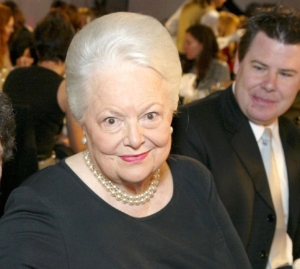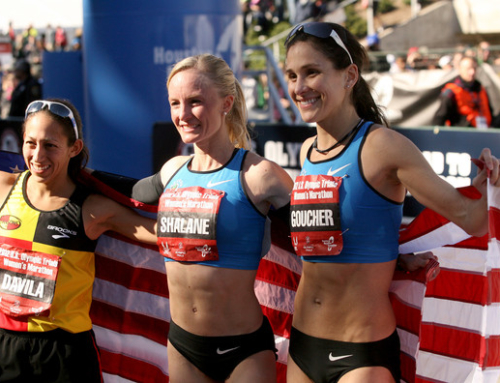By Eddie Pipkin
July 16, 2016
At the beginning of July, film icon Olivia de Havilland, star of Gone with the Wind and one of the last living links to Hollywood’s golden age, turned 100 years old. She is still physically active, witty, and intellectually sharp. She’s lived in Paris for the past six decades, and the newspapers were filled with photos and stories of her life there. One such story stood out particularly for me. It was that she has continued over the decades to read the Scripture at worship services at the Cathedral of the Holy Trinity in Paris.
and intellectually sharp. She’s lived in Paris for the past six decades, and the newspapers were filled with photos and stories of her life there. One such story stood out particularly for me. It was that she has continued over the decades to read the Scripture at worship services at the Cathedral of the Holy Trinity in Paris.
You can read a blog post here recapping the tale (which first became a popular a decade ago) of the seriousness with which she takes the presentation of God’s Word. A more in-depth analysis is offered by Rev. Pierre Whalon here. He details her meticulous attention to thoughtful preparation for each week’s passage, and shares some thoughts of his own as to why it matters how we share God’s word in congregational settings:
But first, why do we read the Bible in church? It would seem to be a silly question: of course we read the Bible in church. However, when else are we subjected to someone reading a text aloud to us? Poetry readings, political speeches, lengthy quotes from law tomes in courts, some sermons, and parents telling children a bedtime story, seem to be the last occasions in our experience for what was once very important in people’s lives before television and the Internet. We read the Scriptures because that forms the spine of every Christian worship service in the world.
Whalon explores the idea that the Scriptures (ancient and literally bound in place) are brought to life in our faith communities by the simple act of having a variety of voices read them, men and women who have taken the time to come to grips with the texts they are asked to share, whose own life experiences and spiritual journeys somehow infuse the sacred words with an even deeper mystical power.
In many congregations, the weekly routine is to have the Pastor read the day’s Scripture lesson, often as a precursor to the sermon that is shared immediately afterwards, itself frequently an exegesis or analysis of the text. For many, this choice is merely a function of logistics (keeping things simple), and sometimes it’s seen as a sacred moment that is clergy-appropriate.
But if it is true that, as Whalon argues, the Scripture is not just a download of holy data, “but the meat and drink of our life of faith,” perhaps we shouldn’t relegate it to the ‘autopilot’ portion of our worship together. Maybe we should spend more quality time in considering the weekly Word as the foundation of all our worship decisions, and maybe we should look for creative ways to make the weekly Word relatable and real for those we lead.
Here are some ideas to consider:
- Use a variety of different readers. For many of our congregations – especially those of us who are very focused on high production values – we tend to use the same voices, largely because they are very good readers/presenters. But it is important to have as many different people ‘up front’ as possible because this communicates so much about who you are as a faith community. Representing all ages, genders, ethnicities, and physical and mental abilities is a direct window to the diversity and values of your community, and the reading of Scripture is a prime opportunity to allow many kinds of people to be involved and valued. It is not always essential to have the best or most demonstrative of readers either. It can be a real witness of courage to have someone do this who is not the best of readers (or clearly not a professional actor).
- Use video. Even if you are a small congregation, there are many video versions of various passages of Scripture available (some as enactments, some as images and key words accompanied by music, some as modern interpretations that open up new ways to think about the words and their meaning). Sources such as GodTube, Vimeo, and YouTube are easily accessible, and for a fee you can use professional services such as the infamous Skit Guys.
- Use drama and dramatic readings. There are always some dramatic folks hanging around (and we mean that in a good way in this case). Give them an opportunity to bring Scriptures to life, acting them out or giving creative readings using props or visual aids.
- Make it interactive. Use call and response Scripture readings, read-alongs, and other participatory versions of Scripture presentation.
- Use the Scripture time as a teaching time. Bring context to your Scripture readings with historical background, maps, graphics, pictures from modern sites related to the reading, and commentary and insights from famous authors. Help people go deeper into the Word by taking a few moments to help them understand how it relates to the grand arc of the Bible’s narrative.
- Suggest resources for how people can go deeper. Use your bulletin, newsletter, social media, and video screens to connect people with resources to explore further on their own. Give them an interactive means for asking follow-up questions or sharing their own observations. Consider a devotional series of daily devotions authored by church members, based on the Scripture selections you’ll be using for a worship series.
- Use different versions of Scripture. There are so many translations and Scripture versions available. Utilize this bounty in worship, using different translations as appropriate (and helping your congregation understand the power of access to multiple translations), sometimes using parallel passages in the same reading to emphasize a particular point.
- Remember that the daily news needs the Good News. Don’t be afraid to add a bonus Scripture to the morning routine (prayer time is an excellent springboard for doing this). The people who join us for worship are hurting in specific ways, depending on what’s happening in the world. Scripture speaks to real needs, the needs that are prevalent in your community. Use every opportunity to remind people how Scripture speaks to every moment and challenge (because God speaks to every moment and challenge).
Whatever strategies you use to enliven your Scripture reading during worship – whether you employ a Creative Team to dream up new and engaging presentations of the Word, whether you recruit a stable of diverse everymen and everywomen to share the reading duties, or even if you stick with doing the reading yourself – Olivia de Havilland’s advice on treating it with the seriousness of which it is worthy is solid guidance. Prayer. Study. Reflection. A careful, line-by-line consideration of the words to be said and the way they will be said, the emphasis to be added, the pauses that add an additional layer of meaning. All of that preparation (in everything we do as worship leaders and teachers—not just the stuff that shows up obviously) adds depth and resonance to what we share.
Whalon captures it like this:
To sum up, reading the Scriptures in church has to be an authentic proclamation of the reader’s faith. Preparation is essential — there are far too many last-minute readings in our churches. In order to get across the words, so that they become for the listener the Word, not only must the reader be trained in the rhetoric of reading aloud but must also be willing to risk wrestling with God over the meaning. Not all biblical texts are comforting, as Miss de Havilland pointed out. People of faith always have doubts — only those who have no faith have no doubts. It is when we have well prepared the text, rehearsed the inflections to give various key words to as bring forth the meaning, and prayed for the Spirit’s help, that we can be authentic proclaimers of the Good News that lies in the Word written.
What are some of the ways that you have used Scripture in public readings that have seemed particularly effective? Share your stories and tips in the comments section.







Leave A Comment